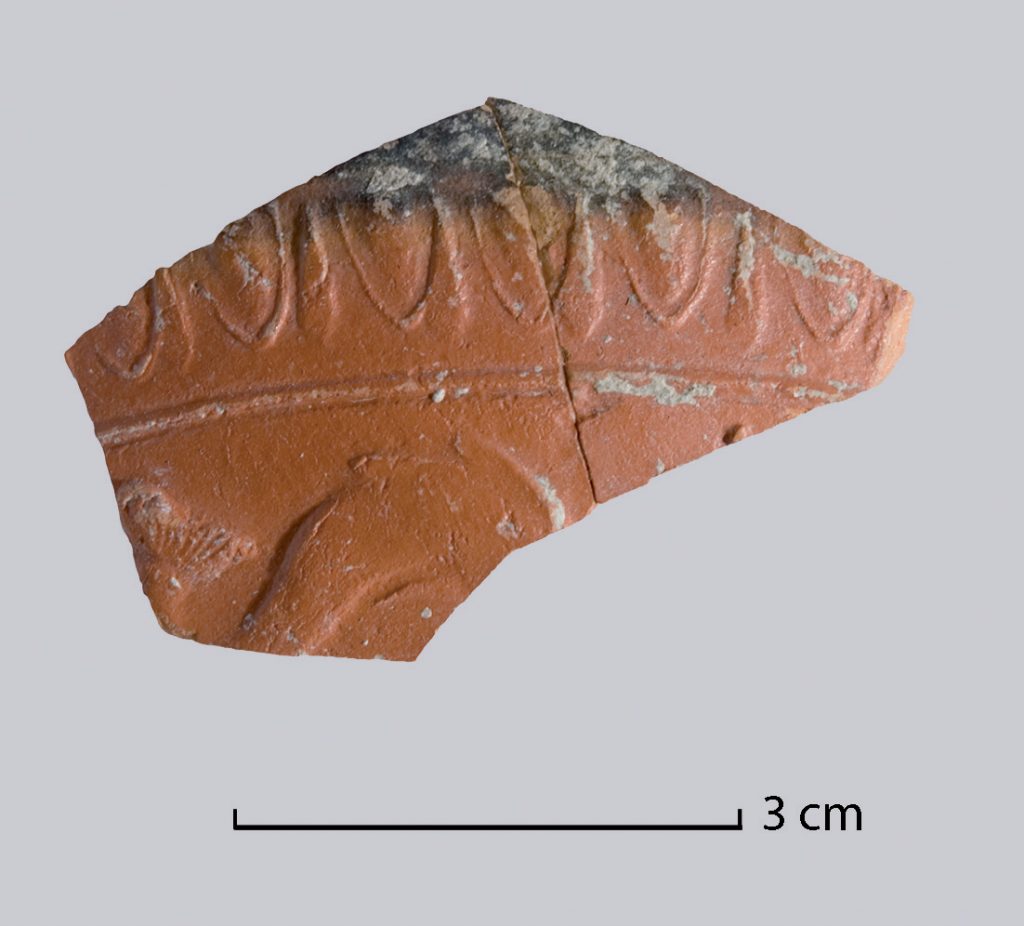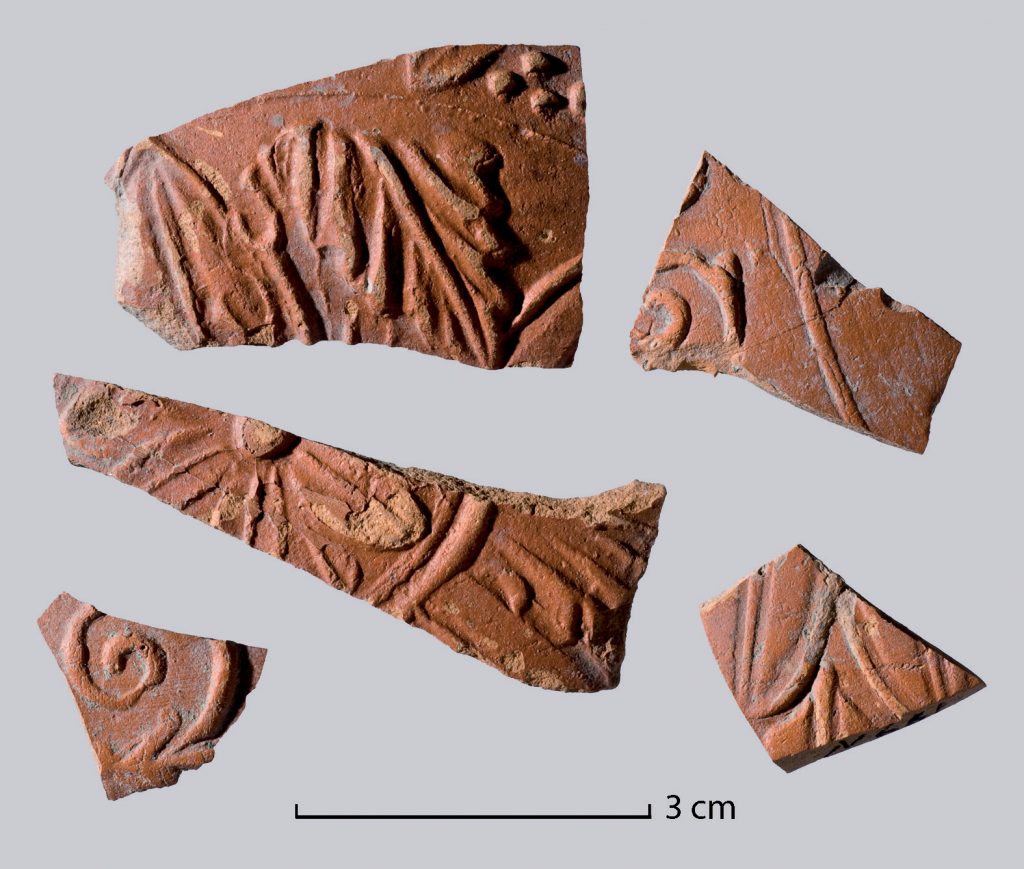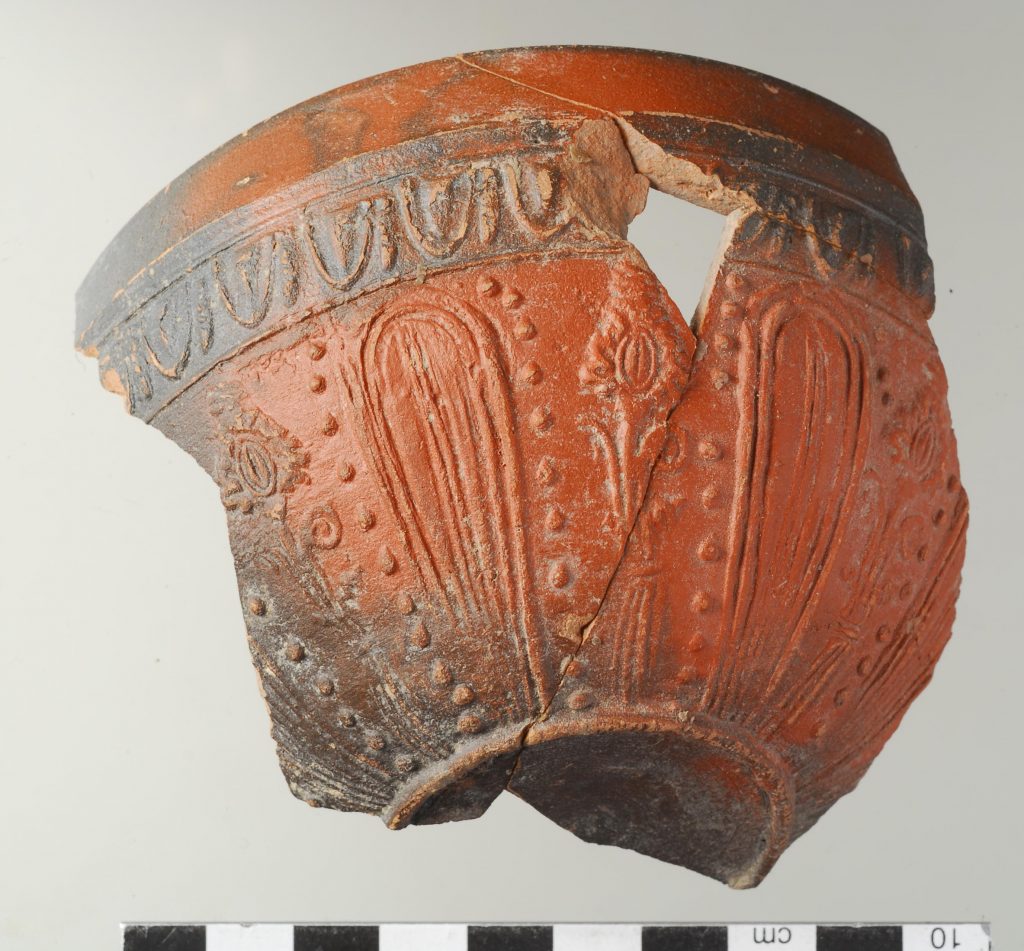
English version below. Die in hellenistischer Zeit in Formschüsseln, in sog. Matrizen, geformte, nicht gedrehte Reliefkeramik war auch am nördlichen Schwarzen Meer beliebt. Am Kimmerischen Bosporos findet sich eine große Palette importierter sowie lokaler Produkte. So auch das Fragment eines Bechers aus Golubickaja 2, das in der Werkstatt des Kirbei gefertigt wurde.

In the Bonn laboratory H. Mommsen was able to locate the Kirbei workshop active in the second half of the 2nd century BC at Kyme in Asia Minor.
Bildrechte: I. Sed’enkov

The so-called Megarian Bowls are decorated with vegetable and figurative decorations, like this vessel with dolphins from around 150 BC.
Bildrechte: I. Sed’enkov

Fragments of another mouldmadebowl with purely vegetable relief decoration also found in Golubitskaya 2.
Bildrechte: I. Sed’enkov

All mouldmade relief bowls shown here were found in Golubitskaya 2 at the Cimmerian Bosporos, also this fragmentary piece.
Bildrechte: I. Sed’enkov
The relief pottery, which in Hellenistic times was formed in moulds, so-called matrices, and not on a pottery wheel, was also popular on the northern shores of the Black Sea. The Cimmerian Bosporos is home to a wide range of imported and local products. One such example is the fragment of a bowl from Golubitskaya 2, which was made in the workshop of Kirbei.
Beitrag von:
Udo Schlotzhauer
Projektpartner:
Denis Zhuravlev (Staatliches Historisches Museum Moskau)